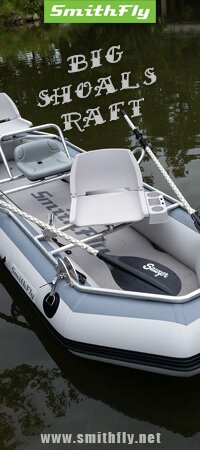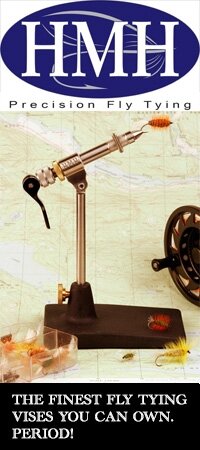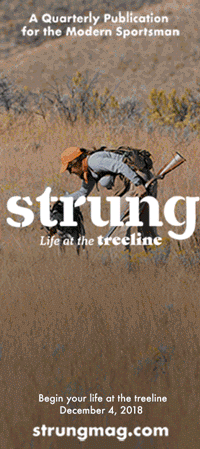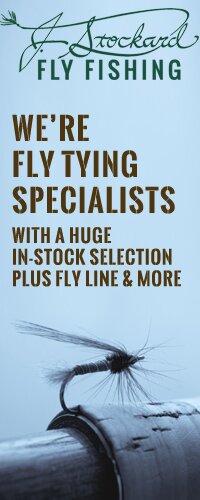 I’ve always had a fascination with bee patterns. To that end I created a couple of patterns in years past and fished them with a moderate degree of success. But they weren’t as productive as I thought they should be. I finally decided that I should make a science of it; systematically determining the best situations, river conditions and seasons to use bee patterns in. In other words; study the bee.
I’ve always had a fascination with bee patterns. To that end I created a couple of patterns in years past and fished them with a moderate degree of success. But they weren’t as productive as I thought they should be. I finally decided that I should make a science of it; systematically determining the best situations, river conditions and seasons to use bee patterns in. In other words; study the bee.
Bees are members of the insect order Hymenoptera which defined means; having membranous wings, undergo complete metamorphosis and live in social colonies. Females possess on ovipositor which typically have a stinger. This order of insects contains bees, wasps, hornets and other similar insects. For the purpose of this article I will confine my discussion to bees. To us, the laymen, they are a group of insects that we call ‘pollinators’. They survive in most all environments including urban, wooded and field settings. Most of our ‘bee’ encounters are with honeybees and bumblebees. Both of these insects are observed from early spring until late fall and both, present opportunities for fly pattern designers and fishermen.
Honeybees usually survive the winter living in their hives with the old workers dying out in the late fall of the year. Bumblebees all die out in the late fall with the exception of the fertilized queen which survives the winter in hibernation.
Over the last two years fishing Michigan waters I’ve determined the circumstances under which I feel bee patterns are best used. I’ve used multiple patterns, some of my own design, some commercially purchased and still other patterns designed by other tyers. I have found that it is necessary only to match the approximate size and colorations of those bees found in a specific area of the country. When I used patterns of bees not found locally my success rate fell dramatically (this should not surprise a fly fisherman).
I found bee patterns to be very successful with browns and rainbows during those ‘hot’ dog days of summer when the temperature was in the high 80s and 90s; especially when there was no wind or breeze. I’d cast a bee pattern to pocket waters or slow runs with a great deal of success. Casting the patterns to rapid waters rarely produced fish. If ‘hoppers’ were present … no contest … they would ignore the bee patterns. When fishing rivers where ‘hoppers’ were not present the bee patterns worked well.
I also discovered that ‘finicky’ trout would rise to a bee pattern when nothing else would elicit a strike, and I discovered that bee patterns were extremely deadly on brook trout in shallow, slow moving waters. Deeper waters inhabited by brook trout were not as productive.
I normally do not fish into the late fall. Once the first of the leaves fall, I hang up my rod. But I wanted to continue my experiment and test out a theory that bee patterns would once again become popular in late fall, when the bees were starting to die off and the trout were starting to bulk up for the winter. Starting about the middle of October most of the insect hatches in Michigan are done. As the cold weather settled in, the bees became more sluggish … flying lower and slower, they were more prone to being blown into the water by the fall breezes. Once again I found the bee patterns working, especially in the larger sizes. Again, I had to confine myself to pocket waters and slow runs. Once the fall frost came, the bees were gone and the patterns became ineffective.
After fishing with a couple of dozen assorted bee patterns I finally developed what I feel is a ‘super’ pattern for the bumble bees we see most often in Michigan. I caught more fish (per cast) with this pattern then any of the others I used.
‘Peacock Bumble’
Hook: Mustad #94840 Size: 8-12
Thread: Black, 6/0
Abdomen: Deer Hair, dyed black, spun and clipped, extended beyond the bend of the hook.
Thorax: Deer Hair, dyed yellow, spun and clipped to shape. Not to extend past the bend of the hook.
Head: Peacock Herl

Peacock Bumble
Late summer and fall provide excellent opportunities for ‘Bumbling’ in most every part of this beautiful country. Whether you pick up some local bee patterns or tie up your own; you’ll now have an excuse to fish a little longer before you hang up your rod for the season.
See you on the water…..
Tom Deschaine
~www.michigandryflies.net~




















